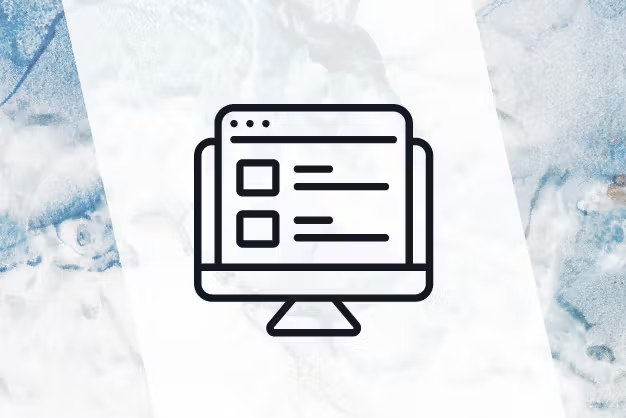How to Drive Customer Acquisition Using Messenger, Instagram and WhatsApp


Customer engagement now happens beyond the contact center. 2020’s Digital Reckoning means customer expectations have changed for online interactions with their favorite brands. As demand for better digital experiences grows, it provides the chance to add more feathers to a brand’s bow when it comes to customer engagement. Rather than being purely reactive to customer queries, it’s now possible to use private messaging channels for proactive CX, particularly when it comes to customer acquisition.
The growth of m-commerce (mobile commerce) is perhaps the biggest factor in this shift in digital marketing techniques. It’s expected that mobile will become the preferred channel for online shopping in the next 5 years. In the U.S. alone, m-commerce is predicted to account for 45% of all e-commerce by 2024. Historically, mobile shopping has seen poor conversion rates due to checkout not being optimized for a small screen – too many fields to fill in every single time – but private messaging channels remove a lot of these frustrations. They are designed for user-friendly flows, which lend themselves to higher conversion rates.
Facebook, Google and Apple all have apps that can be a marketing team’s most-effective tool for customer acquisition, offering different solutions depending on audience and entry point.
It’s quite a lot to cover, so I’ve split the channels into two separate blogs. For this article, I’m featuring Facebook’s suite of messaging channels – Messenger, Instagram Messages and WhatsApp – specifically looking at the benefits of each and how they can super-charger your brand’s customer acquisition strategy.
How to Utilize Facebook Messenger and Instagram Messaging as Customer Acquisition Tools
With both channels under the Facebook umbrella, the advertising infrastructure is every marketer’s best friend. Each of Facebook’s platforms caters to different demographics, age groups and geographical locations, meaning brands can use the same tools for customer acquisition – Click-to-Messenger (CTM) adverts.
With websites or mobile apps, even if there’s a landing page created specifically for conversion, there are plenty of steps in the process where potential customers can drop off. It’s why conversion rates hover around the 2% mark with a cart abandonment rate of nearly 70%. Across Facebook and Instagram, adverts convert at an average of over 9% and CTM ads are often more successful – for a Christmas Lego campaign, they saw 3x more conversions, 31% cheaper than other types of advert with 6x ROI.
The key difference with CTM adverts, on Facebook or Instagram is that once a lead clicks, they’re instantly sent to a private messaging channel and the interactions are contained within it. Whatever the aim of the acquisition campaign, a bot can be implemented to create an automated flow, taking the customer through an effortless sign-up or purchasing process with no channel switching or endless forms to complete.
Two Brands Who Have Successfully Utilized CTM Ads
1. 1-800-Flowers
To quote Mark Zuckerberg “It’s pretty ironic: To order from 1-800-Flowers, you never have to call 1-800-Flowers again.” It’s an excellent example of introducing a bot to tackle a brand’s highest customer intent (i.e. order flowers) and how its relative simplicity turned a flower shop started in Manhattan in the 1970s into one of the earliest adopters of Facebook’s CTM tool.
The bot takes customers through the traditional questions needed for flower delivery – date, who they’re for and, using Facebook’s carousels, a choice of which product you want. Within 2 months, 70% of the company’s chatbot orders came from brand new customers.

1-800 Flowers used Facebook Messenger for quick and easy sales
2. Uber Eats
The food delivery firm wanted to increase first-time orders with new customers by offering coupon codes via Facebook adverts. In comparison between ads that took people straight to their app and CTM, there was a very clear winner.
- 6x more first orders with Messenger
- 4x more purchases overall with Messenger
- 80% drop in cost per first order vs ads that clicked through to the app
One of the key differences with the CTM ads is that once a potential customer clicks, the conversation has already begun in Messenger and could continue in the channel. In the Uber Eats campaign, automated messages sent at the right time, to the right person, acted as an effective reminder they had their 50% off coupon available and were easy to find within their conversation in Messenger.
Instagram Messaging
Instagram’s the destination for 1bn people worldwide to discover products. 90% of its 1bn monthly active users follow at least one of their favorite brands. When the platform announced Instagram Shopping’s release last year, it became the perfect opportunity to monetize the high level of loyalty and engagement on the platform. 70% of shoppers use the app for product discovery, so finding a way to combine discovery and eCommerce made perfect sense.
Three Tools That Help Brands Make Sales on Instagram
- Instagram Shops – Brands create their own tab to showcase products directly on the profile, creating their own collections for followers to see. There’s also an In-app shopping section where brands tagged products appear and users are given recommendations based on who they follow.
- Product Tags – Items from online catalogs featured in feeds or stories can be tagged to highlight them, making an impulse buy very much possible in the digital arena.
- Checkout – Currently only available in the US, but using Facebook pay, an entire purchase can take place within the Instagram app.
It’s from these interactions that brands can really cement the relationship with their customers. Post-purchase engagement is key. Proactive notifications updating during the delivery process with automated order tracking can be done through Instagram Messaging, keeping the customer lifecycle as a single digital relationship.
By beginning the relationship with engaged Instagram followers, future notifications offering discounts, repeat purchases or surveys about their experience can take place over private messaging. 80% of customers want to be engaged by their favorite brands post-purchase, it’s about maximizing the impact of those interactions that can retain a happy and loyal customer.
How to Begin WhatsApp Conversations With New Customers
Despite being under the same Facebook umbrella as Messenger and Instagram, there are a few more restrictions in place for brands using WhatsApp Business to communicate with their customers, which can make proactive engagement difficult. Difficult, but far from impossible.
Brands can use a combination of very old school and digital retro in marketing terms to open a conversation on WhatsApp. By using QR codes printed on physical promotional items. It could be a flyer, packaging, receipts or in storefronts – basically anywhere someone with a smartphone can see one and might be inspired to scan it.
Described as a ‘digital front door that makes opening a chat with a business as easy as possible’, a QR code can bring a new or existing customer into a private messaging channel. Once in a WhatsApp conversation, by using tools such as catalog, brands can showcase their products and services all within the app, making sales via WhatsApp a much more straightforward proposition. More than 40m people view a business catalog on WhatsApp every month, and with in-app payments possible in Brazil and India, an entire shopping experience takes place from scanning the QR code all the way through to checkout.
Facebook’s collection of private messaging platforms make interactions between brands and their customers a seamless experience across the whole lifecycle. If there’s one thing that marketers are always looking for in their customer acquisition efforts, it’s a cost-effective way to reach a high proportion of their target audience where they are most likely to be ‘hanging out’ (that’s actually probably a little bit more than ‘one thing). With the capabilities of Messenger, Instagram Messaging and WhatsApp to achieve this, putting private messaging channels at the heart of any customer acquisition strategy is an amazing way to attract and keep new customers with a much higher CLV.